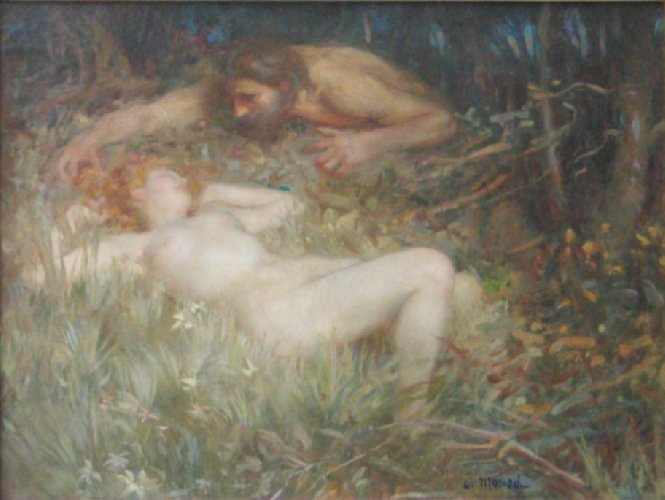Description:
Lucien Hector Monod (1867-1957) was a French painter and lithographer. His work derived from the Symbolism movement. He painted in the Art Nouveau and 18th century French rococo style. He studied at the Académie Julian in Paris*. His works are characterized by capturing a unique color scheme, especially in shaded parts, hours of observation of nature and an impressive decorative representation. Monod perceived and captured the uniqueness and poeticism of the everyday life that was no longer noticed. He was a popular artist, often subordinating the themes of his works to the tastes of the public for financial purposes.
Description of the painting:
The painting is titled “Flava Lucorias (Satyr and Nymph)”. It is located in the gallery of paintings in Rogalin. The author of the representation is Lucien Monod. The heroes of this scene are the titular satyr and nymph. Nymphs (in Greek, nymph means ‘girl’) being beings between gods and humans, lived for a very long time, not aging. They were divided into: naiads – water nymphs, oreades living in the mountains, lejmoniadies – those who lived on marshy meadows, dryads inhabiting forests and hamadriads, which in turn lived in trees. Nymphs were associated with everything pleasant and delicate. Satyrs, on the other hand, are creatures with half goat and half human bodies, with a pointy beard, pointed ears and often with horns on their heads. Being under the influence of the extraordinary charm of the nymphs, they often “played in the forest” with them*.
The painting we are looking at shows a satyr peeping at a sleeping nymph from the bushes, and knowing the nature of these creatures, we can only guess the intentions of the voyeur. This slightly erotic theme and specific color scheme is characteristic of Lucien Monod’s work, and the atmosphere maintained in the representation is reminiscent of French rococo.


